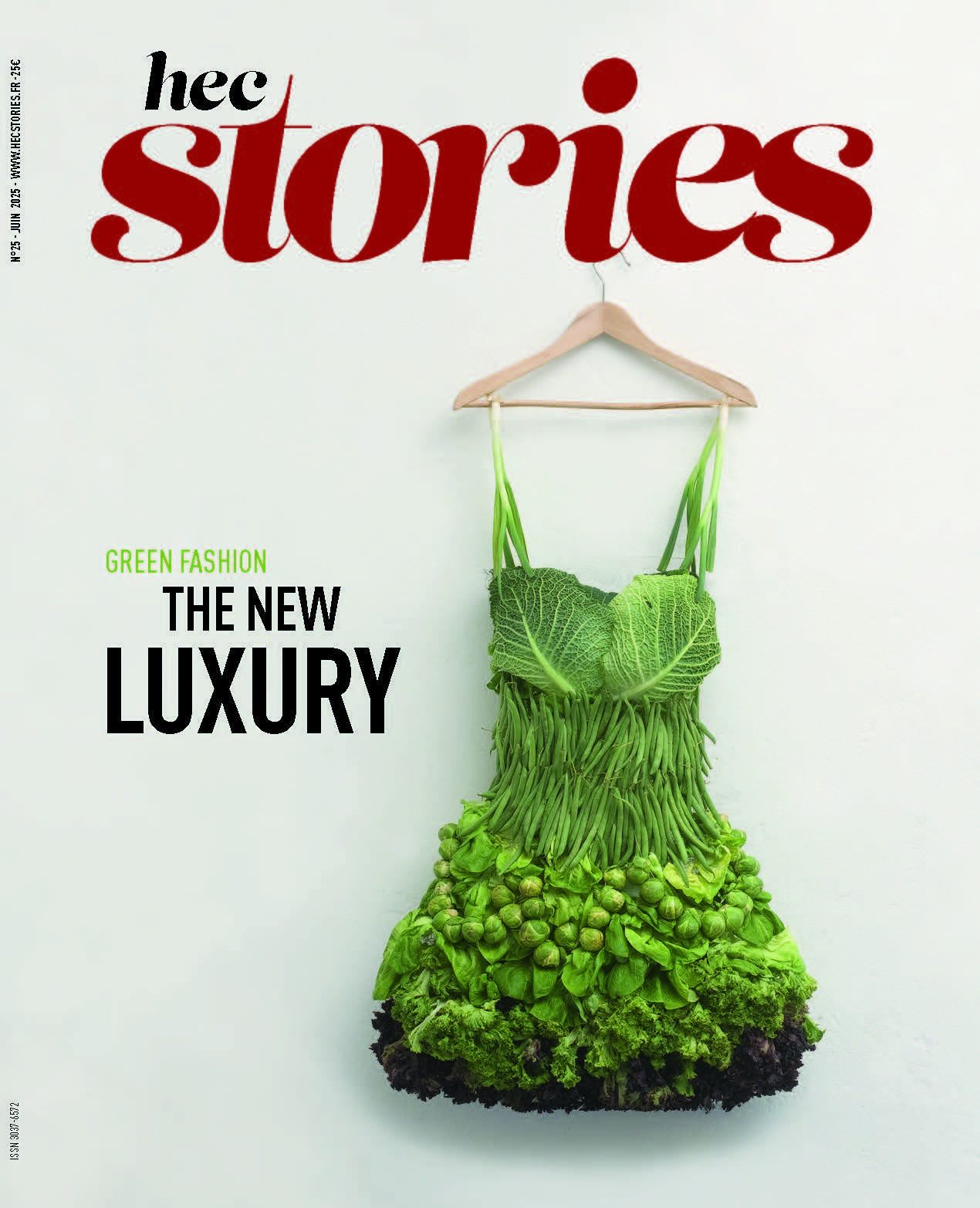Private Visit of the Louvre Abu Dhabi and Meeting with Its Director, Manuel Rabaté (H.01)
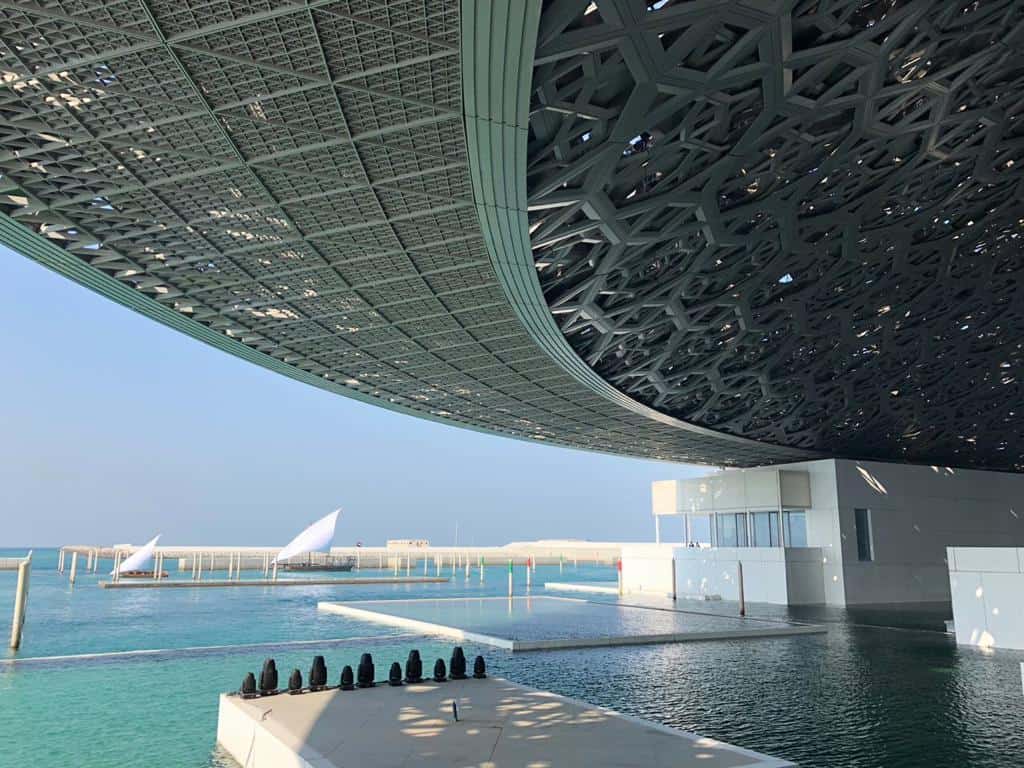
A delegation of happy HEC alumni visiting the United Arab Emirates stopped by the Louvre Abu Dhabi, an art museum on the shores of the Persian Gulf, which covers all aspects of artistic creation: from the origins of art to the present day. An exceptional meeting with Manuel Rabaté (H.01), Director of the museum.
It is 34°C outside, but easily 7°C cooler under the majestic dome of the Louvre Abu Dhabi. This masterpiece by Jean Nouvel uses a clever technique of interlocking bars which allows the light to filter through. « When it rains outside, it rains here » says Manuel Rabaté who welcomes us under this canopy which he describes as a kinetic work. The shapes, reflected on the ground by the movement of the sun, form a constellated dome of 180 metres in diameter. The works of art by Guiseppe Penone and Jenny Holzer planted in the ground « are interdependent contents”. “We are in the space and in the works of art at the same time; this is the meeting point of art, » says the Director, who tirelessly intersperses our exchanges with handshakes and other greetings. « It’s because we’re close to the exit, » Manuel Rabaté, an accessible star in his field, modestly justifies.

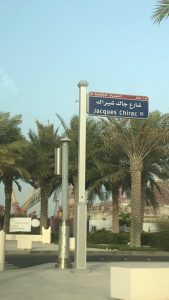
After an informal discussion with the fellow alumni, the group heads into the alleys of this universal museum that borrows part of its collection from 13 French public cultural institutions, including the Louvre, the Pompidou Centre, the Orsay Museum, the Orangerie and the Quai Branly Museum where Mr. Rabaté used to work. The museum aims to reflect the common history of humanity through different cultures and civilizations with works of art ranging from prehistory to contemporary artists. This ambition was achieved thanks to an agreement between the United Arab Emirates and France in 2007. The friendship of the two countries was sealed and the avenue leading to the entrance of the museum is called ‘Jacques Chirac Street’, in homage to the important role of the former French president in consolidating these links. « My father had a relationship with this country, this people and in particular with the great figure of Sheikh Zayed [Sheikh Zayed bin Sultan al-Nahyane, founding father of the Emirates, editor’s note], which was very much marked by respect and friendship, » his daughter, Claude Chirac, said in 2019.
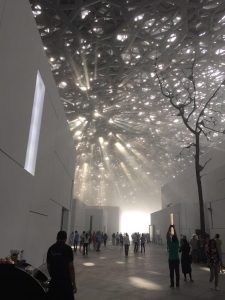
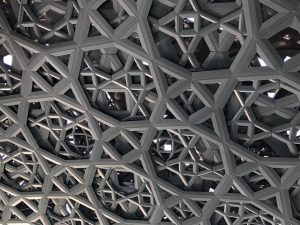
HEC STORIES: Is there an obvious link between the teaching at HEC and your job at the Louvre Museum?
Manuel Rabaté: At HEC, you learn a set of skills that can be put to good use in economic life or in a rather special field like culture. In my case, I joined culture as soon as I left school. I started at the Louvre, then I was part of the opening of the Quai Branly museum and I enjoyed the pleasure of this adventure. So I absolutely wanted to join the France Musuem agency [the agreement between the 13 French public cultural establishments that allows the Louvre Abu Dhabi to exhibit its collection, editor’s note] and then Abu Dhabi.

![]()

HEC STORIES: As director of the museum, what exactly is your role?
Manuel Rabaté: It’s a diplomatic project. I work for Abu Dhabi’s Department of Culture and Tourism. I was appointed by the Emiratis on the proposal of the French after about ten years working on the project. My mission which is to run the museum and to participate in this ministry of culture and tourism is based on four pillars:
The container. We are in a complex space that needs to be maintained, cared for, developed, secured… this is how a building works with its environment.
The content. Between the collections and the stories we tell, we have a group of curators, specialists in the history of art, but also specialists in education or professionals who work with « people of determination » [the UAE uses this term to refer to people with disabilities in recognition of their achievements in different fields, editor’s note]. It is this whole group that must be brought together to produce content. The director of a museum is the guarantor of this editorial continuity. He or she must give a place to the specialists, each in their own field, and find the right balance between programming, strategy and all the diplomatic issues linked to the Louvre Abu Dhabi which is an exchange with museums around the world.

The public. We can also talk about marketing or development, all the terms I learned in my major at HEC. But the world of culture will also talk about sociology, about the public in difficulty, and we have a whole implantation strategy to touch key audiences such as the Emiratis, the local public… We must go and find those who live in the north of the Emirates, such as taxi drivers. There should be no financial barrier. Then there is the commercial aspect: how do we communicate or what kind of deal do we make with the tour operators? The civic missions or commercial responsibilities are the same as when you run a restaurant or a shop. Here, with the national museums, you have to think about the business plan and profitability. You have to be able to combine the civic with business. This is very specific to museums.
Organization: my studies at Sciences Po and at HEC were very structuring. It’s the management of a team of 170 people. Between visitor services and security, for example, it’s a complex operation and a place that is always on the alert, welcoming its public six days a week.
The end of our memorable and privileged visit to the Louvre Abu Dhabi Museum and the way to the Great Mosque, the « Sheikh Zayed » Mosque, another jewel of the capital.
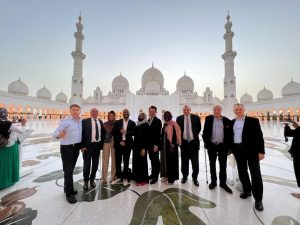
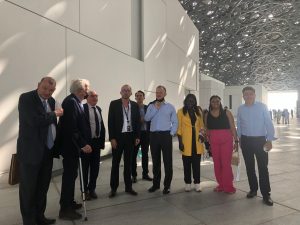
Published by Daphné Segretain
